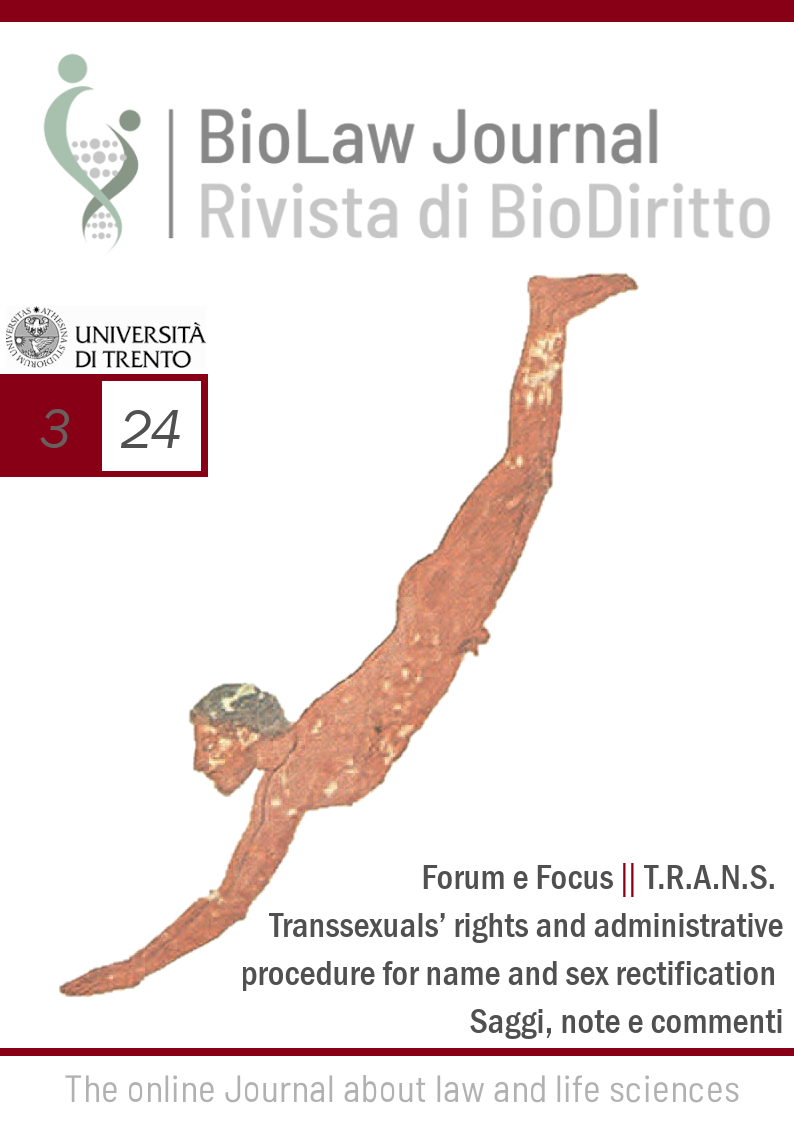Recognition of gender identity between election and ascription: comparative analysis of normative models of sex rectification
DOI:
https://doi.org/10.15168/2284-4503-3191Keywords:
Right to gender identity, gender recognition, identity recognition, gender self-determination, comparative lawAbstract
The purpose of this paper is to examine, with a comparative approach, the existing normative models of gender recognition, with the aim of highlighting current normative trends and delving into the questions which result still unsolved in this field. Through the study of the normative frameworks endorsed by different jurisdictions, belonging mainly to the European and Latin American context, the paper highlights the concrete implications they produce on the dynamics of recognition of gender non conforming identities. In conclusion, the survey aims to provide an overview of possible existing legal solutions, highlighting the elements of convergence and divergence between them.
Downloads
Published
How to Cite
Issue
Section
License

This work is licensed under a Creative Commons Attribution-NonCommercial-NoDerivatives 4.0 International License.





